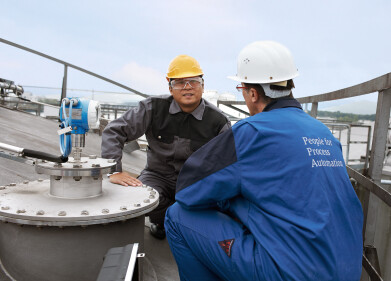Analytical Instrumentation
What's Causing Sinkholes to Emerge in Texas?
Apr 06 2018
There's no lack of controversy surrounding fracking, a process that sees liquid injected into subterranean rocks at ultra-high pressures to extract oil and gas. Now, a new study published in Scientific Reports has fanned the flames and served as a reminder that the dangers posed by the oil and gas industry are often obscure and unpredictable.
Texas is America's largest oil and gas producer, with a total of 27 operable refineries. The state sits atop an enormous reserve of oil and natural gas, which is strewn with wells and fracking sites. While the industry generates huge profits, the impact on the natural environment is taking its toll. Sinkholes have emerged as a bona fide threat, with a pair of geophysicists from Dallas's Southern Methodist University using advanced radar satellites to track topographical changes and pinpoint geographical risks.
Humans to blame for subsidence, seismicity and sink holes
Wastewater from oil, gas and fracking operations has been flagged as a key culprit, which is often injected into the ground by refiners. This creates uplift and micro-earthquakes, which can eventually facilitate decay and trigger well collapses. After examining four ribbons of land in West Texas, the geophysicists concluded that hydrocarbon extraction taking place at abandoned oil facilities, coupled with fluid injections from current fracking projects, is having a negative impact on surrounding ground surfaces. Ultimately, this could lead to subsidence, seismicity and sink holes.
The authors assert that most of the topographical changes are due to human activity, which can often fast-track change by up to 100 times faster than it would naturally occur. They also warn that while major sinkholes often make global headlines, many of the state's geohazards are barely noticed, let alone reported. They conclude by stressing that increased monitoring will play an essential role in safeguarding the natural environment, as well as the local population.
Profits vs topography
According to a recent estimate released by the United States Geological Survey (USGS), the West Texas Wolfcamp Shale Formation alone cradles around 20 billion barrels of oil, all technically recoverable. It's part of the greater Permian Basin geological province, which has been producing oil for over a century. With such vast profits on the line, halting oil and gas production in the name of topography is unlikely.
Sinkholes are just one of the gaping problems associated with the oil and gas industry. Carcinogenic effects are also a big concern, with exposure to gasoline linked to detrimental health effects. Spotlighting the new one-column approach, 'Resolve Benzene, Other Aromatics, and Oxygenates in Reformulated Gasoline' introduces the latest SLB®-ILD3606 Column technology from Sigma-Aldrich.
Digital Edition
PIN 25.1 Feb/March
March 2024
In This Edition Safety - The technology behind the ION Science Tiger XT - Safety with ammonia and LOHCs as hydrogen carriers Analytical Instrumentation - Discussion on new tribology te...
View all digital editions
Events
Apr 22 2024 Hannover, Germany
Apr 22 2024 Marrakech, Morroco
Apr 22 2024 Muscat, Oman
Apr 22 2024 Rotterdam, Netherlands
Apr 23 2024 Singapore


















